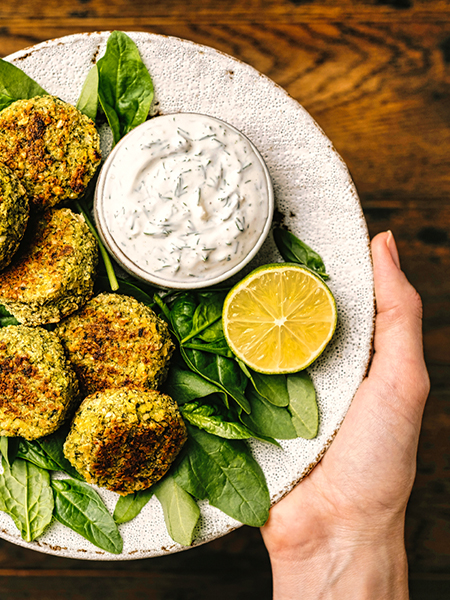Climate protection and animal welfare as driving factors
He lets these facts sink in and orders something in the café: homemade falafel with beetroot hummus and grilled eggplant. While he enjoys this, he talks about his personal relationship with food. “I eat meat, but only good meat,” says the platform manager, whose family keeps sheep at home in a wild herb meadow and treats them as their own meat source to make homemade sausages. “I also think plant-based alternatives are super exciting if they taste good. This eggplant here, for example, will be plenty for me – no need for schnitzel.”
This thinking is common at the moment. “Worries about the climate and animal welfare are significant driving factors for the development of alternative, plant-based proteins,” says Herkner. Another driver is the technological revolution: “The technologies for the development of comparable plant-based products are visibly improving. They make meat alternatives more attractive for the broad consumer class because they can imitate the flavor, smell and consistency of meat, fish, seafood, dairy products and eggs.” In the end, costs are reduced so far that they are comparable with the price of real meat.





